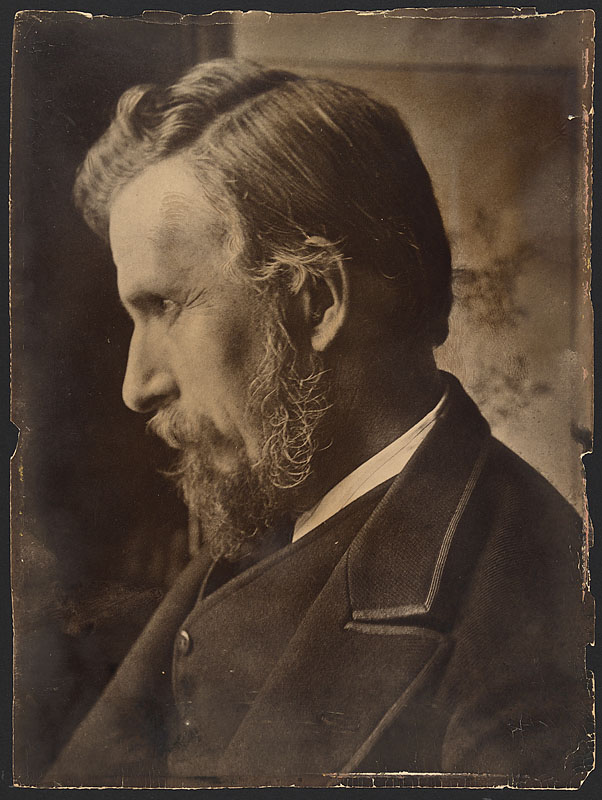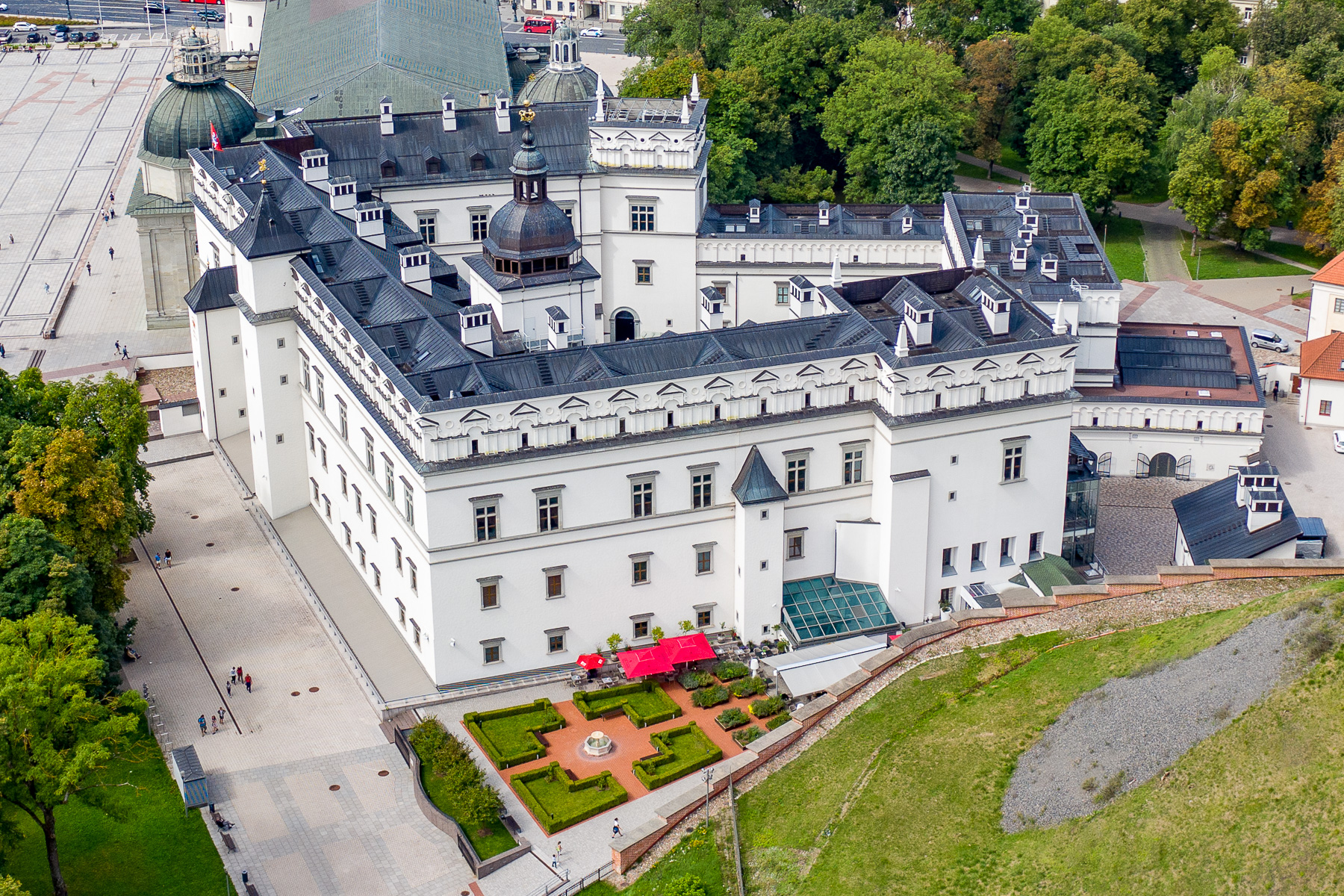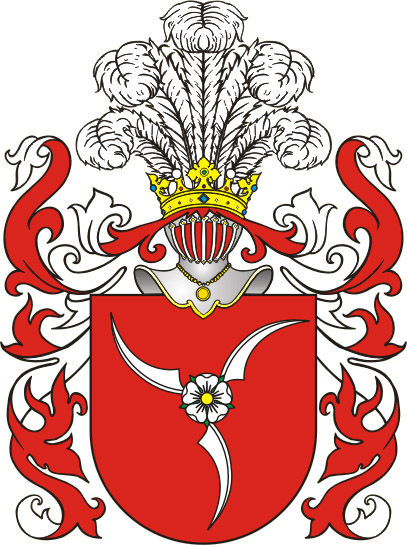|
Statutes Of Lithuania
The Statutes of Lithuania, originally known as the Statutes of the Grand Duchy of Lithuania, were a 16th-century codification of all the legislation of the Grand Duchy of Lithuania and its successor, the Polish–Lithuanian Commonwealth. The Statutes consist of three legal codes (1529, 1566, and 1588), all written in Ruthenian, translated into Latin and later Polish. They formed the basis of the legal system of the Grand Duchy and were "the first full code of laws written in Europe since Roman Law" and "a major milestone inasmuch as it is the first attempt to codify significant East European legal trends". The Statutes evolved hand-in-hand with the Lithuanian expansion into Slavic lands, thus the main sources of the statutes were Ruthenian Laws, Baltic tribes had neither written culture nor systematic laws, while the Ruthenians published codified collections of law 5 centuries before the first statute of the Grand Duchy of Lithuania. Old Slavic customary law, as well as the ... [...More Info...] [...Related Items...] OR: [Wikipedia] [Google] [Baidu] |
Codification (law)
In law, codification is the process of collecting and restating the law of a jurisdiction in certain areas, usually by subject, forming a legal code, i.e. a codex (book) of law. Codification is one of the Civil law (legal system)#Codification, defining features for most civil law jurisdictions. In common law systems, such as that of English law, codification is the process of converting and consolidating judge-made law or uncodified statutes enacted by the legislature into statute law. History Ancient Sumer's Code of Ur-Nammu was compiled ''circa'' 2050–1230 BC, and is the earliest known surviving civil code. Three centuries later, the Babylonian king Hammurabi enacted the Code of Hammurabi, set of laws named after him. Important codifications were developed in the ancient Roman Empire, with the compilations of the ''Twelve Tables, Lex Duodecim Tabularum'' and much later the ''Corpus Juris Civilis''. These codified laws were the exceptions rather than the rule, however, as du ... [...More Info...] [...Related Items...] OR: [Wikipedia] [Google] [Baidu] |
Rule Of Law
The essence of the rule of law is that all people and institutions within a Body politic, political body are subject to the same laws. This concept is sometimes stated simply as "no one is above the law" or "all are equal before the law". According to ''Encyclopædia Britannica'', it is defined as "the mechanism, process, institution, practice, or norm that supports the equality of all citizens before the law, secures a nonarbitrary form of government, and more generally prevents the arbitrary use of power." Legal scholars have expanded the basic rule of law concept to encompass, first and foremost, a requirement that laws apply equally to everyone. "Formalists" add that the laws must be stable, accessible and clear. More recently, "substantivists" expand the concept to include rights, such as human rights, and compliance with international law. Use of the phrase can be traced to Tudor period, 16th-century Britain. In the following century, Scottish theologian Samuel Rutherfor ... [...More Info...] [...Related Items...] OR: [Wikipedia] [Google] [Baidu] |
Sigismund II Augustus
Sigismund II Augustus (, ; 1 August 1520 – 7 July 1572) was King of Poland and Grand Duke of Lithuania, the son of Sigismund I the Old, whom Sigismund II succeeded in 1548. He was the first ruler of the Polish–Lithuanian Commonwealth and the last male monarch from the Jagiellonian dynasty. Sigismund was elder of two sons of Italian-born Bona Sforza and Sigismund the Old, and the only one to survive infancy. From the beginning he was groomed and extensively educated as a successor. In 1529 he was chosen as king in '' vivente rege'' election while his father was still alive. Sigismund Augustus continued a tolerance policy towards minorities and maintained peaceful relations with neighbouring countries, with the exception of the Northern Seven Years' War which aimed to secure Baltic trade. Under his patronage, culture flourished in Poland; he was a collector of tapestries from the Low Countries and collected military memorabilia as well as swords, armours and jewellery. Sigism ... [...More Info...] [...Related Items...] OR: [Wikipedia] [Google] [Baidu] |
Grand Duke Of Lithuania
This is a list of Lithuanian monarchs who ruled Lithuania from its inception until the fall of the Grand Duchy of Lithuania in 1795. The Lithuanian monarch bore the title of Grand duke, Grand Duke, with the exception of Mindaugas, who was crowned king in 1253. Other Lithuanian rulers, such as Vytautas the Great, also attempted to secure a royal coronation, but these efforts were unsuccessful.Nadveckė, Ineta (6 July 2019Trys Lietuvos karaliai: vienas tikras, vienas nelabai ir vienas beveik''Lithuanian National Radio and Television, LRT''. Until 1569, the Lithuanian monarchy was hereditary. In 1386, Grand Duke Jogaila was elected King of Poland. From that point onward, with some interruptions, the two states were united in a personal union, sharing a common ruler until 1569, when they were formally merged by the Union of Lublin to form the Polish–Lithuanian Commonwealth. The monarch of this new state was elected in a free election by the entire nobility. From the Christianizat ... [...More Info...] [...Related Items...] OR: [Wikipedia] [Google] [Baidu] |
King Of Poland
Poland was ruled at various times either by dukes and princes (10th to 14th centuries) or by kings (11th to 18th centuries). During the latter period, a tradition of Royal elections in Poland, free election of monarchs made it a uniquely electable position in Europe (16th to 18th centuries). The first Polish ruler whose existence is not debatable was Mieszko I, Duke Mieszko I, who Christianization of Poland, adopted Christianity under the authority of Rome in the year 966. He was succeeded by his son, Bolesław I the Brave, who greatly expanded the boundaries of the Polish state and ruled as the first king in 1025. The following centuries gave rise to the mighty Piast dynasty, consisting of both kings such as Mieszko II Lambert, Przemysł II or Władysław I the Elbow-high and dukes like Bolesław III Wrymouth. The dynasty's rule over Poland ceased with the death of Casimir III the Great in 1370. In the same year, the Capetian House of Anjou became the ruling house with Louis I t ... [...More Info...] [...Related Items...] OR: [Wikipedia] [Google] [Baidu] |
Albertas Goštautas
Albertas Goštautas ( – 1539) was a Lithuanian noble of the Goštautai family from the ethnically Lithuanian lands of the Grand Duchy of Lithuania. Voivode of Navahrudak since 1508, Voivode of Polotsk since 1514, Voivode of Trakai since 1519 and Voivode of Vilnius since 1522. In 1522, he became Grand Chancellor of Lithuania. He was the initiator and the editor of the First Statute of Lithuania, as a successor of his staunch opponent Mikolaj Radziwiłł, who rivaled him in the precedence in the Council of Lords. His subsequent rival in influence in the Grand Duchy was Konstanty Ostrogski. In 1529, he received the title of count from Pope Clement VII, and in the following year, thanks to the efforts of Jan Dantyszek, he received the title of Graf of Hyeranyony from Emperor Charles V. Life Origns and early life Albertas was a son of Martynas Goštautas and an unknown daughter of (also called Trabski). Albertas' father married later Anna Galshansky, daughter of hi ... [...More Info...] [...Related Items...] OR: [Wikipedia] [Google] [Baidu] |
Casimir Code
Casimir's Code (; ; ), also known as the Sudebnik of 1468, was a legal code adopted by Grand Duke of Lithuania and King of Poland Casimir IV Jagiellon with the approval of the Lithuanian Council of Lords. It was the first attempt to codify the laws of the Grand Duchy of Lithuania. The code prescribed punishment for property crimes and limited court procedures. Much of the legal system was left uncodified and was governed by customs. The manuscript is now in the State Historical Museum in Moscow, as MS Uvar. 702-4°. Context The date or the circumstances when the code was adopted are unknown. The historians conjured that the most probable date is February 1468 when the Seimas of the Grand Duchy of Lithuania met in Vilnius. The code differed from privileges previously issued by the Grand Duke because the code granted no new rights to the nobility. Judging from the content, the code was intended for the nobility and landowners, who received Casimir's privilege in 1447 to try '' v ... [...More Info...] [...Related Items...] OR: [Wikipedia] [Google] [Baidu] |
Mikołaj Radziwiłł (1470-1521)
Mikołaj Radziwiłł or Nicholas Radziwill may refer to: * Mikalojus Radvila (c. 1450–1509), Grand Chancellor of Lithuania *Mikołaj II Radziwiłł (1470–1521), Grand Chancellor of Lithuania * Mikołaj III Radziwiłł (1492–1530), Bishop of Samogitia *Mikołaj "the Red" Radziwiłł (1512–1584), Voivode of Vilnius, Grand Chancellor and Grand Hetman of Lithuania *Mikołaj "the Black" Radziwiłł (1515–1565), Voivode of Vilnius, Grand Chancellor and Grand Hetman of Lithuania *Mikołaj VII Radziwiłł (1546–1589), Voivode of Navahrudak *Mikołaj Krzysztof "the Orphan" Radziwiłł Mikołaj is the Polish cognate of given name Nicholas, used both as a given name and a surname. It may refer to people: In Polish (or Polish-Lithuanian) nobility: * Mikołaj Kamieniecki, Polish nobleman and the first Grand Hetman of the Crown * ... (1549–1616), Grand Marshal of Lithuania, voivode of Trakai and Vilnius * Mikołaj Krzysztof Radziwiłł (1695–1715), Podstoli of Lithuania and ... [...More Info...] [...Related Items...] OR: [Wikipedia] [Google] [Baidu] |
Grand Chancellor Of Lithuania
The Grand Chancellor of Lithuania (Lithuanian language, Lithuanian: ''Lietuvos didysis kancleris'') was one of the highest Offices in the Polish–Lithuanian Commonwealth, offices in the Grand Duchy of Lithuania. The office functioned from the middle of the 15th century until the end of the real union with the Kingdom of Poland in 1795 and its subsequent third partition of Poland, partition among Prussia, Russia and Austria. The chancellor possessed the Great Seal of Lithuania and had the Lithuanian Metrica at his disposal. History It is thought that the role of chancellor originated from court positions of the manor of the Grand Duke of Lithuania. Although the role of a state chancellor existed since the times of Grand Duke Vytautas, it formally appeared during the reign of Casimir IV Jagiellon. The expanding territory of the Grand Duchy of Lithuania and the increasing value of land, property as well as judicial institutions meant an increased need for written documents. The need ... [...More Info...] [...Related Items...] OR: [Wikipedia] [Google] [Baidu] |
Lithuanian Council Of Lords
The Lithuanian Council of Lords () was the main permanent institution of central government in the Grand Duchy of Lithuania active in its capital city of Vilnius. It had originated from the advisory Council of the Grand Duke, established by Vytautas the Great in the early 15th century. During the reign of Casimir Jagiellon it was renamed to the Council of Lords. Under the Union of Lublin of 1569, the Council formally became a constituent part of the Polish–Lithuanian Senates (see also Offices in the Polish-Lithuanian Commonwealth), together with the Royal Council of Poland, but it continued to operate ''de facto'' until the mid-17th century. Competence The Council carried out the functions of the Grand Duke after his death and had a supreme authority in the Grand Duchy of Lithuania until a new Grand Duke was appointed, as well as organised his appointment. The first appointed ruler was Casimir Jagiellon, who in exchange expanded the council's powers significantly and approved t ... [...More Info...] [...Related Items...] OR: [Wikipedia] [Google] [Baidu] |
Augustinus Rotundus
Augustinus Rotundus (, , 1520–1582) was a Christian and Renaissance humanist, erudite, jurist, political writer, first historian and apologist of Lithuania. Rotundus was vogt of Vilnius, general secretary to the Grand Duke and King Sigismund Augustus and elder of Stakliškės. After his nobilitation to the szlachta, Rotundus adopted surname Mieleski, or Milewski. Biography Rotundus was born in Wieluń in the Kingdom of Poland around year 1520. His surname is supposed to be "Mieleski", although some researchers suggest that it was adopted later. ''Rotundus'' is translated nickname, probably inherited from his father – Mikołaj () "Okrągły" (), who was a rich furrier in the city of Wieluń. Rotundus studied in University of Wittenberg and Lubrański Academy in Poznań, where he was suspected of writing a nasty lampoon about Poznań catholic chapter. Undoubtedly Rotundus was a passionate catholic after graduation and supported Hereditary monarchy and Execution movement ... [...More Info...] [...Related Items...] OR: [Wikipedia] [Google] [Baidu] |
Tsarist Autocracy
Tsarist autocracy (), also called Tsarism, was an autocracy, a form of absolute monarchy in the Grand Duchy of Moscow and its successor states, the Tsardom of Russia and the Russian Empire. In it, the Tsar possessed in principle authority and wealth, with more power than constitutional monarchs counterbalanced by legislative authority, as well as a more religious authority than Western monarchs. The institution originated during the time of Ivan III (1462−1505) and was limited with the introduction of constitution and national-level representative assembly ( State Duma) after the 1905 Revolution. Still, the term continued to be applied to the monarchy in Russia until the Russian Revolution of 1917 by Russian revolutionaries and afterwards, in the Soviet Union. History Ivan III (reigned 1462–1505) built upon Byzantine traditions and laid foundations for the tsarist autocracy which with some variations would govern Russia for centuries.Peter Truscott, ''Russia First: ... [...More Info...] [...Related Items...] OR: [Wikipedia] [Google] [Baidu] |






